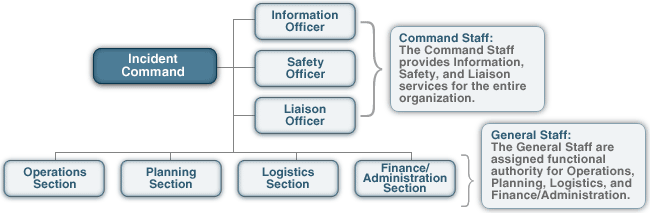|
Apply on-line now for Colorado Firecamp's upcoming S-130/190 Basic Firefighter classes:
Cost: $650 includes tuition, books, meals & lodging. Agency sponsorship is not required. Apply online now. List of items needed for class is posted with S-130/190 class details. Daily bus service to Salida departs from downtown Denver at 1:45 pm with a one-way cost of about $29 on the Bustang, Crested Butte-Denver route. Light rail train service departs every 15 minutes on the RTD-Denver A Line between Denver International Airport and Union Station in downtown Denver, with a ticket cost of $10 each way. Schedule your flight arrival time for 11:30 am or earlier on the day prior to your class start for the bus connections to Salida. Extra night of lodging costs $35. Firecamp staff will pick-up and drop-off students at the bus stop in Salida at no charge.Information about finding a job as a wildland firefighter.South Canyon Fire witness statement — Tony Petrilli, 1994Introduction to ICS
S-130 Instructor EvaluationFirefighter 2 TasksInteragency Media Guidelines for Wildland Fires—March, 2004 |
Lesson 3: ICS Organization: Part ILesson OverviewThe ICS Organization: Part I lesson introduces you to the:
By the end of this lesson, you should be able to:
ICS OrganizationThe ICS organization is unique but easy to understand. There is no correlation between the ICS organization and the administrative structure of any single agency or jurisdiction. This is deliberate, because confusion over different position titles and organizational structures has been a significant stumbling block to effective incident management in the past. For example, someone who serves as a Chief every day may not hold that title when deployed under an ICS structure. Performance of Management FunctionsEvery incident or event requires that certain management functions be performed. The problem must be identified and assessed, a plan to deal with it developed and implemented, and the necessary resources procured and paid for. Regardless of the size of the incident, these management functions still will apply. Five Major Management FunctionsThere are five major management functions that are the foundation upon which the ICS organization develops. These functions apply whether you are handling a routine emergency, organizing for a major non-emergency event, or managing a response to a major disaster. The five major management functions are:

Organizational Structure-Incident CommanderOn small incidents and events, one person, the Incident Commander, may accomplish all five management functions. In fact, the Incident Commander is the only position that is always staffed in ICS applications. However, large incidents or events may require that these functions be set up as separate Sections within the organization. Organizational Structure-ICS SectionsEach of the primary ICS Sections may be subdivided as needed. The ICS organization has the capability to expand or contract to meet the needs of the incident. A basic ICS operating guideline is that the person at the top of the organization is responsible until the authority is delegated to another person. Thus, on smaller incidents when these additional persons are not required, the Incident Commander will personally accomplish or manage all aspects of the incident organization. ICS Position TitlesTo maintain span of control, the ICS organization can be divided into many levels of supervision. At each level, individuals with primary responsibility positions have distinct titles. Using specific ICS position titles serves three important purposes:
Supervisory Position Titles
Incident Commander's Overall RoleThe Incident Commander has overall responsibility for managing the incident by objectives, planning strategies, and implementing tactics. The Incident Commander must be fully briefed and should have a written delegation of authority. Initially, assigning tactical resources and overseeing operations will be under the direct supervision of the Incident Commander. Personnel assigned by the Incident Commander have the authority of their assigned positions, regardless of the rank they hold within their respective agencies. Incident Commander ResponsibilitiesIn addition to having overall responsibility for managing the entire incident, the Incident Commander is specifically responsible for:
The Incident Commander may appoint one or more Deputies, if applicable, from the same agency or from other agencies or jurisdictions. Deputy Incident Commanders must be as qualified as the Incident Commander. Selecting and Changing Incident CommandersAs incidents expand or contract, change in jurisdiction or discipline, or become more or less complex, command may change to meet the needs of the incident. Rank, grade, and seniority are not the factors used to select the Incident Commander. The Incident Commander is always a highly qualified individual trained to lead the incident response. As you learned in Lesson 2, formal transfer of command at an incident always requires a transfer of command briefing for the incoming Incident Commander and notification to all personnel that a change in command is taking place. Expanding the OrganizationAs incidents grow, the Incident Commander may delegate authority for performance of certain activities to the Command Staff and the General Staff. The Incident Commander will add positions only as needed.

Command StaffDepending upon the size and type of incident or event, it may be necessary for the Incident Commander to designate personnel to provide information, safety, and liaison services for the entire organization. In ICS, these personnel make up the Command Staff and consist of the:
The Command Staff reports directly to the Incident Commander. <<< continue reading—Introduction to ICS, Lesson 4 >>>
|
| © 2005-2021 Colorado Firecamp, Inc. | home • schedule • blog • ENGB • facility • about us• FAQ's |